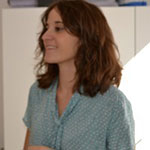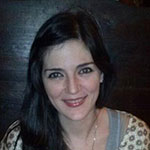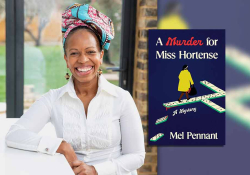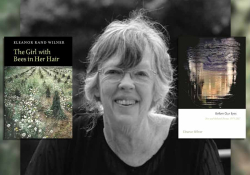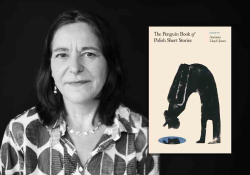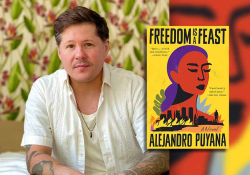Between Two Moments, Literature and Life: A Conversation with Miguel Ángel Hernández
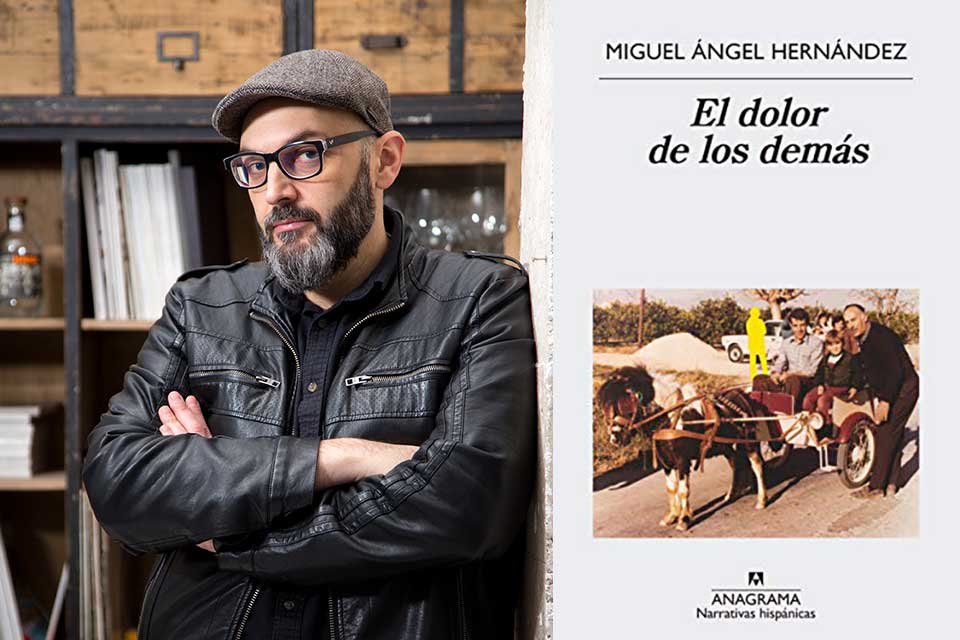
Miguel Ángel Hernández (b. 1977, Murcia) is a writer and a professor of art history at the University of Murcia in Spain. Some of his most important works of fiction are Intento de escapada (2013; finalist of the Herralde Novel Award), El instante de peligro (2015; finalist of the Herralde Novel Award), and El dolor de los demás (2018). His last publication, the writing journal Aquí y Ahora (Fórcola Ediciones, 2019), can be added to his two previous journals: Presente continuo (2016) and Diario de Ithaca (2017).
María Ayete Gil: It has been a little more than a year since El dolor de los demás was released. However, the publication of Aquí y Ahora seems to have definitely ended some kind of cycle for you. Do you share this feeling? Why?
Miguel Ángel Hernández: In a way, I do. The epilogue in Aquí y ahora has helped me close part of the story told in the novel. El dolor de los demás also spoke about the effects that the book could have. The writing of the book was one part, but the act of publishing, and its effect, was a very important one. I believe that the journal implies some type of closure that takes place elsewhere, “off-camera.” It’s a special type of closure—because it confirms the closing of the novel, the option of not wanting to know—but I do feel it is a closure, a way of avoiding the writing of an eventual second part. I needed to get out of that story, and I did not fully accomplish it with the novel.
The journal—especially the epilogue, which talks about the reception of the book in the most immediate environment—helps me end a process that could be infinite, as after finishing the book, things kept happening to me that, if I had still been writing the novel, I would have been tempted to add. Eventually, the story ended in two different moments, just like when gymnasts land after finishing their routine, then do a little jump to maintain their posture, and wave.
The story ended in two different moments, just like when gymnasts land after finishing their routine, then do a little jump to maintain their posture, and wave.
Ayete Gil: Both in your journals and in parts of El dolor de los demás, you write using the second person. Do you need to create some distance from what you are narrating, questioning the reader and making them part of the narration? Or is it just a voice with which you feel comfortable?
Hernández: I guess it is just mainly a voice with which I feel comfortable. It is the second person, but it’s also a specific tone, voice, and syntax. Short sentences, repetition, in many occasions elision of the verb . . . it’s a language that is minimal and helps me catch the immediate reality, like little lines or impressionist touches. Maybe it is rooted in all the times that I read Samuel Beckett during my teenage years. For some time, I internalized the repetitious tone of the L’innommable trilogy, and I believe I haven’t completely gotten rid of it. With respect to the second person, it is true that it’s easy for me to use, but it also has some meaning when I write about myself; it is a type of dissociation that allows me to distance myself from what I am writing. And it also generates a direct allusion to the reader. I would say it is a type of minimalism that works through reflections.
Ayete Gil: I think that one of the biggest accomplishments of El dolor de los demás is its structure, a complex, polyhedral, and enveloping structure by means of which you get to confront with great mastery the task of writing about a past that is still alive in the present. Where does this disposition come from, and how do you arrive at it?
Hernández: When I planned the novel, I was convinced that I had to write in two tenses. I had to explain the research and reflection process of the past but also show that night which was not completely gone yet and which stayed in my memory like an immovable wall. Past and present are the same thing in the novel. There are things you cannot understand in the past that time helps us understand. And, on the contrary, the past fully influences the present experience. Through the two tenses of the novel I was trying to explain this intertwining, but also the unsolvable conflict between two temporalities that never end up completely synchronizing. At least until the end, in the last paragraph, in which the two moments, the long night of the past and the present that reflects on trauma, touch each other. It is, maybe, the time for mourning.
Past and present are the same thing in the novel. There are things you cannot understand in the past that time helps us understand.
Ayete Gil: Walter Benjamin’s reflections about history are evident behind El dolor de los demás. Has your present reactivated the past in your text?
Hernández: Yes, the reflections about the past and history, which were key in the reading of El instante de peligro, come back to this novel, especially the idea I mentioned before that has to do with the way in which the past comes back, and how one has to be ready to capture it. Because, as Benjamin wrote, we also risk losing our past; and losing our past, when the moments are interconnected, is a way of losing the present as well as the future. Without any doubt, remembering is a way of activating that past and make it useful for the present. The memory that interests me is not so much a melancholic memory that doesn’t do anything but a productive memory that makes us move forward. A nostalgia, in the words of Svetlana Boym, that helps us walk, but does not monumentalize or condemn the past as an unmoving museum.
Ayete Gil: In contrast to your previous narrations, in El dolor de los demás we cannot explicitly find the theoretical sources you work with. Why the change? Why hide the theoretical pillars on which the novel stands?
Hernández: Well, they are less present, but they are there. In one part I speak about Pierre Nora and the memory places, about Benjamin and the Paris passages, about the images of Alfredo Jaar. . . . The thing is that theory permeates the plot here. It is not about hiding but rather about avoiding the hindering of narration. It also has to do with the character of what is told. In Intento de escapada or especially in El instante de peligro, the characters mastered the theory, they were artists or historians; Roland Barthes or Benjamin were natural referents for them. In this story, making theory explicit would be unnatural. I wanted to write about the countryside from the countryside. My intention was that any of the characters in the novel could read it, understand it, and be moved by it. I did not want to write about “the others” but without the others.
However, there are a lot of reading levels. The learned writer will recognize the sources. But a less experienced reader in the theory can also follow what is told and clearly understand the reflections about the past, about violence, about the images. Maybe they won’t know whether they come from Benjamin, from Susan Sontag, from Roland Barthes. But at the end of the day it doesn’t matter. I believe that novel has made me conscious of the fact that theory, for it to really work, must be invisible and permeate the narration. The opposite is just a name-dropping that seeks attention and is more about the writer than the subject matter.
Theory, for it to really work, must be invisible and permeate the narration.
Ayete Gil: Your writing journal Aquí y ahora works perfectly as a B-side (or A-side) for El dolor de los demás, and it is, without any doubt, a gift for readers. However, turning a private text into a public one carries some risks. Would you agree?
Hernández: My journal is really a public journal. It was published weekly in the webpage of the Eñe magazine while I was writing the novel. Later, for its publication as a book with Fórcola, I wrote the long epilogue. In both cases it is a text to be read, just like any other. It is both intimate and domestic, attached to the everyday routine, but it was public from the start. That, of course, makes its character different from journals that weren’t written to be published or the ones written to be released many years after their writing, when a lot of it has “expired.” It is true that at times I have to use coded language; there is still intimacy for me beyond the journal. I speak of many things, but of course, writing is selecting, focusing, and framing. And what remains off-camera also exists, even if it is not narrated.
Ayete Gil: Writing somatization is only one of the several examples that show in Aquí y ahora the strong imbrication that, for you, link literature and life (“like a painting by Escher,” as you highlight in your journal). Does Miguel Ángel Hernández suffer the symptoms of Montano’s sickness,[i] and is he, like Rosario Girondo, “literature-crazed”?
Hernández: Maybe I am literature-crazed, yes. Marcos, the main character in Intento de escapada, was theory-crazed. And I am not very far from that. Everyone, deep inside, suffers that sickness. We see the world and we interpret it according to the established discourses, although we may not always be aware of it. We learn to love, to hate, to kiss, to behave, to live, etc. through cultural patterns. Novels, paintings, films, shows . . . build our experience. In my case, maybe I am excessively aware of that and I tend to interpret everything I experience as belonging to these forms of language. It’s Montano’s sickness, but it is also somehow Don Quixote’s, who turns his world into literature. The quotidian becomes an adventure in a novel. He is the main character of his own novel. That is not so different from those who write about their lives and while writing, while registering their experience through words, while narrating them, turn them into literature.
Ayete Gil: In several instances in your journal, you reflect on the effects of writing on reality (“books are not innocuous”). Does innocent literature exist?
Books affect reality, all of them, in one way or another.
Hernández: Books affect reality, all of them, in one way or another. Innocent literature does not exist, but sometimes literature can be unconscious. What one writes contributes to the transformation of the world, its reproduction, it being the way it is . . . therefore, the writer must be aware of the scope of the books, for better or worse. Writing is an act of responsibility. It is necessary to have ethics for writing—ethics, not morals. Many times, literature intends to fight against established morals, to question them and to tighten them. That’s the origin of the uncomfortable feeling that great literature causes, the one that takes our certainties to the edge and shakes them. And that can be done both from fiction and nonfiction.
Ayete Gil: In Aquí y ahora, we can also find your fascination with the aesthetics and the narrative of TV shows. What exactly dazzles you from the audiovisual world, and which elements interface with literature? Is literature at risk of taking a secondary position with respect to the art of the small screen? Does it already have that position, or, on the contrary, does such a threat not exist?
Hernández: Here we find the component of mere entertainment. I like many TV shows and films and not necessarily because of their narrative quality. Many times, I just enjoy the stories. But it is true that on other occasions I am highly attracted by the narrative mode. It is not so different from narrative text. TV shows are full of narrative resources like the ones they teach at literary workshops. And the other way around, novels are increasingly influenced by TV shows, both in the creation of characters and in the stories and environments. Deep inside, it’s the same: it’s about telling stories.
In any case, literature is threatened today not only by TV shows but by the way entertainment is being redefined. Reading books is becoming more and more vestigial. When we get home it’s easier to turn on Netflix and watch anything than to open a book. In addition, the following day we can have a conversation about it at work. Because we have watched the show everyone is talking about. Books are not part of the conversation anymore; TV shows are more attractive. Image seems to have won the battle to generate a story about the world.
However, literature still has a potential that the audiovisual does not: imagination. Image determines what is seen. The word suggests a path toward a mental image that is completed by the reader. The films we watch in our heads when we are reading a book are much stronger than the ones we watch on a screen. There is no screen capable of substituting imagination.
July 2019
Translation from the Spanish
[i] Translator’s note: This is a reference to Spanish writer Enrique Vila-Matas’s novel Mal de Montano.
